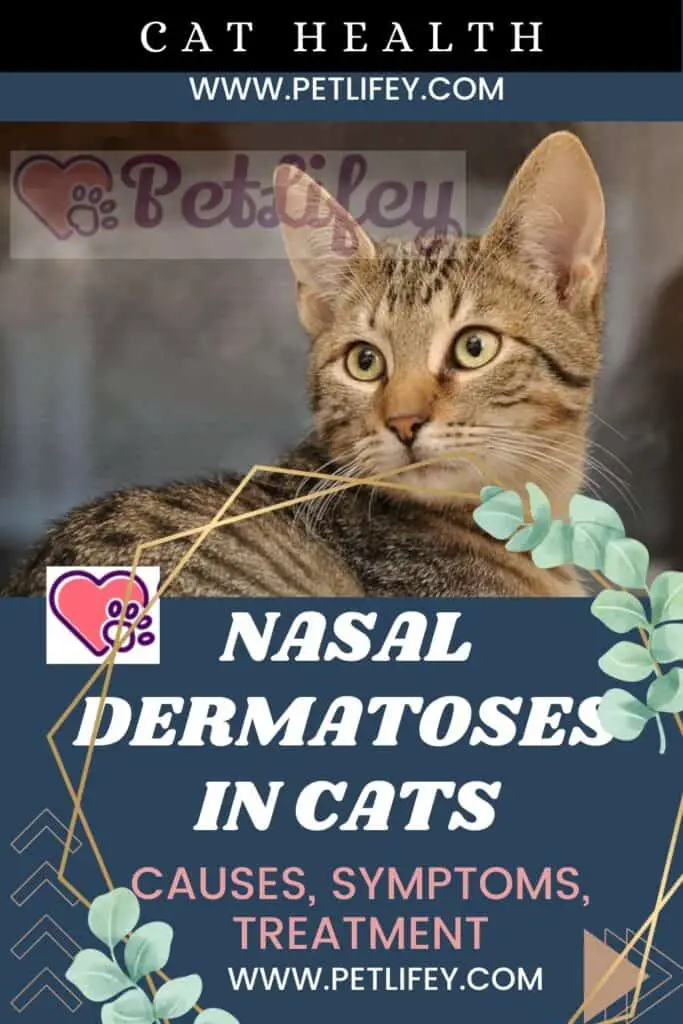Nasal dermatosis in cats, diseases of the skin covering the cat’s nose. Let’s see what the causes, symptoms and treatment are.

On the cat’s nose there are so many incorrect information and perplexing questions such as: “Why does the cat’s nose change color? Why is it wet? Why is it too dry?
The nose for the cat is important with it, it analyzes the scented messages of their own kind, locates the food sources, the mother’s breasts and much more.
It is therefore advisable to be very careful, when the sense of smell or the condition of the cat’s nose suddenly changes.
It can be a serious disease that arises through nasal dermatoses in cats. Let’s see what the causes, symptoms and treatment depending on the reasons for the dermatosis.
Causes of nasal dermatoses in cats
The causes of nasal dermatosis in cats can be many.
The main reasons are:
- parasites in cats (mites)
- cancer
- nasal solar dermatitis
- immune system disorders
- fungus
- nasal lesions with pus
- pathologies of the connective tissue
- skin crusts sensitive to zinc
- sensitivity to certain substances, including some medications
- trauma
Symptoms

Among the signs that can occur in nasal dermatoses in cats, there are the following symptoms:
- redness of the cat ‘s skin
- scars
- scabs
- excess pigment
- rashes that have pus
- hair loss ( alopecia in cats )
- loss of pigment
- ulcers / lumps on the skin
Diagnosis and treatment of nasal dermatoses in cats
In order to make a correct diagnosis, your vet will need to culture samples of skin from the cat’s nose for bacteria and fungi, as well as biopsies and tests of the feline’s immune system.
After having determined the underlying cause, he will proceed with the appropriate treatment to prune the animal to recovery.
Only if the only symptom is loss of pigment, the vet might choose not to prescribe any treatment for the cat.
In other cases, however, as we mentioned, depending on the diagnosed cause, it will proceed in a different and adequate way.
- Solar dermatitis in cats: In the case of solar dermatitis, he will prescribe cortisone to soothe the inflammation and also to keep the cat out of the sun as much as possible. Sunscreens may be recommended and will need to be applied at least twice a day.
- Skin rashes : Where pus-filled rashes are present, the vet will prescribe cortisone in a gradually decreasing dosage. Hot baths to remove crusted skin and pus are also very efficient. Also, find out which allergens your cat may be sensitive to, such as a plastic or rubber plate, pillow or blanket, or certain medications. Remember that drugs, such as cortisone, should only be used under veterinary supervision.
- For cancerous cat tumors, surgery is usually required followed by chemotherapy and radiation.
- Fungal infections : Your vet may want to surgically remove some of the lesions before the course of antifungal treatment begins. However, they can often be treated with drugs alone. Immunosuppressive therapy may also be prescribed. Surgery may be needed for nodules that are not infected.






